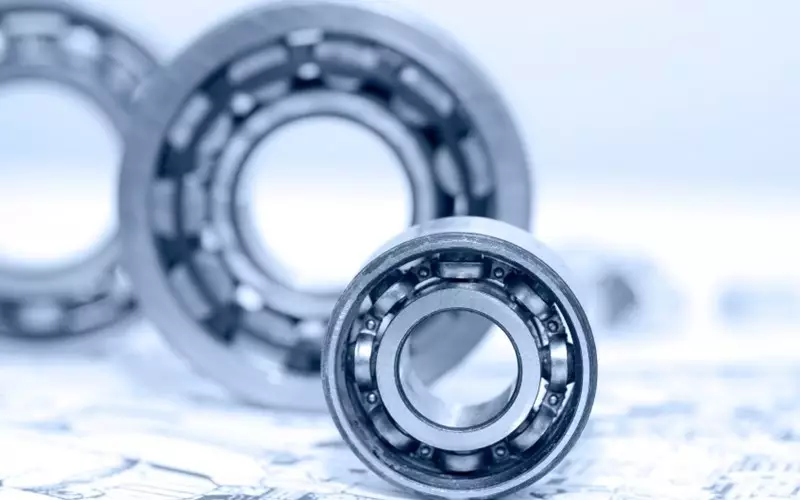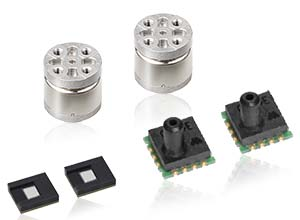
Sensor ICs & Sensor Related ICs
Pacific International Bearing Sales (PIB) is an authorized distributor for (NMB) a division of MinebeaMitsumi, connecting engineers and buyers with MinebeaMitsumi’s cutting-edge Sensor ICs and related power management ICs. MinebeaMitsumi is renowned for uniting ultra-precision mechanical fabrication with advanced electronics – a synergy born from the 2017 merger of Minebea’s micromechanical expertise and Mitsumi Electric’s analog IC know-how. This in-house technology development yields high-performance components that combine sensors, power ICs, and mechanical elements into “Electro Mechanics Solutions™” for the IoT age. In this article, we introduce key families of MinebeaMitsumi’s sensors and sensor-related ICs, including digital pressure sensors, temperature sensors/switches, battery fuel gauges, charging ICs, and power supply ICs, along with real technical specifications and use cases.
In-House Technology & Development Significance
Vertically integrated development process is a key strength behind its sensor IC offerings. The company designs and manufactures critical components in-house – from the MEMS sensing elements to the analog front-end (AFE) ICs – under strict quality control. This vertical integration means that performance optimizations (such as built-in calibration and error compensation) are implemented during manufacturing, ensuring exceptional accuracy and reliability. For example, MinebeaMitsumi’s MEMS pressure sensor modules are produced entirely in-house and factory-calibrated, which lets customers obtain accurate pressure readings without extra calibration steps. By combining precision mechanics with custom IC design, MinebeaMitsumi can deliver miniaturized, power-efficient solutions that would be hard to achieve with off-the-shelf components. This in-house “Electro-Mechanical” approach results in sensor ICs known for high accuracy and low power consumption – qualities crucial for IoT devices, wearables, automotive electronics, and more. PIB, as the distribution partner, reinforces this value by providing local inventory and technical support, effectively bridging the gap between factories and OEM.
Digital Pressure Sensor ICs (MEMS Pressure Modules)
Digital pressure sensor ICs are MEMS-based pressure transducers with integrated signal conditioning and digital output (ideal for measuring barometric or gauge pressure in compact devices). These sensors leverage piezoresistive MEMS elements and on-chip ADCs to deliver precise pressure readings over common digital interfaces (e.g., I²C), all in a miniature module. The family includes gauge-type pressure sensor ICs like the MMR901XA/902 series and the newer MMR906, as well as absolute pressure modules (e.g, MMR931XA for barometric readings). Key specs highlight their suitability for battery-powered and portable applications:
- Wide Operating Range & Accuracy: For example, MMR901XA operates on 2.4–3.6 V and measures 0–300 mmHg of air pressure with ±2 mmHg accuracy. The low-voltage MMR902 and compact MMR906 work from a 1.7 V to 3.6 V supply, covering ~10 to 330 mmHg with the same ±2 mmHg accuracy. For absolute pressure measurements, the MMR931XA module spans 30–110 kPa with ±100 Pa accuracy, in an ultra-small 3×3×1.1 mm package.
- Integrated Digital Output: These pressure ICs output digitized pressure readings directly, simplifying integration with microcontrollers. The built-in ADC and calibration logic mean engineers don’t need to handle analog sensing or complex compensation – the module provides temperature-corrected pressure data out of the box.
- Applications: Digital pressure sensor ICs find use in altimeters, wearable blood pressure monitors, HVAC controls, and any application needing precise pressure or altitude sensing at low power. Their MEMS construction and in-house calibration ensure stability and repeatability in critical uses.
Temperature Sensor & Switch ICs
Temperature monitoring is another specialty of the sensor IC lineup. The company offers both analog temperature sensors and digital threshold switches, each optimized for accuracy and minimal power draw – important for protecting devices or managing thermal conditions with tiny battery budgets.
- Temperature Switch ICs: These are essentially tiny thermostat switches that trip at a predefined temperature. Models like MM3488 and MM3688 provide an open-drain or CMOS output that toggles when a set threshold is reached (with built-in hysteresis to prevent chatter). Various threshold options from 60°C up to 90°C (in 1°C increments) are available per different IC part numbers, allowing designers to choose a trigger temperature appropriate for their system. The MM3488 series operates from –30 to +105°C ambient, using a 1.6–5.0 V supply, and achieves ±2.0°C detection accuracy. Notably, the MM3688 variant is an ultra-low current version: it draws only ~0.12 µA typical, while still maintaining ±2°C accuracy over –40 to +125°C range. These micropower switches (in SSON-4B or PLP-4A micro packages) are ideal for battery-operated thermal protection – e.g., shutting off a charger if overheating, or controlling a fan or heater at a setpoint.
- Analog & Digital Temperature Sensors: For continuous temperature measurement, MinebeaMitsumi provides sensor ICs that output a temperature reading. The MM3154 is an analog-output sensor with –8.20 mV/°C voltage slope, covering –40 to +100°C; it runs on 2.4–6.5 V and needs only ~2.5 µA, with ±2.5°C accuracy (from 30–100°C). On the digital side, the MM3285 integrates a temperature sensor with an I²C interface: it offers 0.5°C resolution, ±2°C accuracy (typical over –25 to +100°C range), and operates from 3.0–5.5 V. Even with its higher functionality, the MM3285 consumes only ~75 µA, suitable for mobile and IoT devices.
Whether it’s a simple temperature switch IC acting as a guardrail or a sensor IC feeding precise readings to a microcontroller, MinebeaMitsumi’s temperature ICs emphasize accuracy and efficiency. They enable smarter thermal management in smartphones, laptops, battery packs, and industrial controllers, often without the need for external calibration. (For instance, the switch IC accuracy of ±2°C is high enough to trust as-is for most overheating protection scenarios.)
Fuel Gauge ICs (Battery Fuel Gauge Monitors)
Accurately tracking battery charge and health is critical in modern electronics – and MinebeaMitsumi’s fuel gauge ICs are engineered to provide just that for lithium-ion cells. These ICs measure a battery’s parameters (voltage, current, temperature) and estimate the State-of-Charge (SoC) and State-of-Health (SoH) with high precision. PIB offers MinebeaMitsumi fuel gauge ICs that give design engineers ready-made solutions for battery monitoring, avoiding the complexity of developing gauging algorithms from scratch.
A prime example is the MM8033 one-cell Li-ion fuel gauge IC. It integrates a high-resolution 16-bit delta-sigma ADC to continually measure battery voltage and charge/discharge current. The MM8033 performs current integration (Coulomb counting) and periodically self-corrects the calculated charge level using the cell’s open-circuit voltage and characterization data, which results in very accurate remaining capacity estimates. Impressively, it can resolve changes as small as 1 mA of current and 1 mV of battery voltage, ensuring even subtle consumption is tracked.
To support long battery life, these fuel gauges are extremely low-power. The MM8033, for instance, typically draws only 32 µA during active monitoring, dropping to 1 µA in its shutdown mode. Despite the low power usage, it doesn’t skimp on functionality: it includes on-chip temperature sensing and can detect battery degradation over time by tracking capacity fade (alerting the system to a potentially worn-out battery). The device operates over a 2.5 V to 5.5 V range to accommodate single-cell Li-ion or Li-Poly packs, and communicates via an I²C interface for easy integration into battery management systems.
Key features of fuel gauge ICs:
- High Accuracy Gauging: Utilizing 16-bit ADC measurements and sophisticated algorithms, these ICs can estimate charge level with minimal error across discharge cycles. This translates to reliable battery % readings for end-users and efficient use of the battery’s full capacity.
- Battery Safety & Health Monitoring: Functions like capacity degradation detection are built in. The IC monitors how the battery’s total capacity changes over many cycles and can signal when the battery health drops below a threshold – enabling proactive maintenance or replacements in applications like medical devices or high-end laptops.
- Low Power Consumption: Designed for always-on battery attachment, the fuel gauges consume only tens of microamps during normal operation and can enter microamp-level standby modes. This ensures the gauge itself doesn’t appreciably drain the battery it’s monitoring.
- Small Footprint Packages: these gauges are in compact package types (e.g., the MM8033 is in a PLP-10D package) that can fit on crowded PCBs like smartphone motherboards or wearable PCBs. Despite the small size, they integrate voltage regulators and I/O pins for direct connection to the cell and host controller.
Overall, fuel gauge ICs like the MM80xx series provide a ready-made solution for accurate battery fuel gauging, saving development time and adding value in any battery-powered product. PIB can help match customers with the appropriate gauge IC for their battery configuration and accuracy requirements.
Charge Control ICs (Li-Ion Battery Chargers)
Complementing the fuel gauges are charge control ICs – dedicated chips for charging lithium-ion batteries safely and efficiently. The lineup ranges from simple linear chargers for single-cell batteries to feature-rich switching charge controllers for faster charging and multi-function power paths. All are designed with high precision voltage regulation and robust safety features, aligning with expertise in battery management ICs.
Linear Charging ICs: For example, the MM3458 is a linear charge control IC for 1-cell Li-ion/Li-Poly batteries. It has an input voltage range of 4.0–6.0 V and regulates the battery to a 4.2 V CV (constant voltage) with ±30 mV accuracy (≈±0.7%). This high precision helps maximize battery capacity without overcharging. The MM3458 supports up to 1.5 A charge current and includes built-in functionalities that simplify the charging circuit: for instance, it does not require an external sense resistor for current measurement (using internal sensing instead), and it integrates the pass transistor (no external FET needed, as it’s a linear regulator type). These integrations save board space and BOM cost. Thermal regulation and safety timers are typically on-chip as well to prevent overheating or overcharging.
MinebeaMitsumi offers variants with tweaks for different needs – e.g., the MM3635 supports selectable 4.2 V/4.05 V CV for extended battery life applications, and the MM3658 is set for 3.6 V CV to charge LiFePO₄ chemistry cells. There are also ultra-small, low-current chargers like MM3865 (supports 3–500 mA charge currents in a tiny 6-pin package for wearables).
Switching (Buck) Charging ICs: For higher power or more advanced battery management, switching regulator-based chargers are available. The MM3439 is a switching charge control IC that can deliver up to 2.0 A charge current using a buck (step-down) topology. It operates from 4.5–5.5 V input (USB power range) and, like the linear types, it holds CV regulation at 4.2 V ±30 mV. Being a buck converter, it runs cooler and more efficiently at high currents compared to linear chargers – a key advantage for fast-charging large batteries. Another high-end model, MM3539, even includes dual-path charging (system power while charging) plus an on-chip ADC and real-time clock for extended functionality.
All of MinebeaMitsumi’s charger ICs share a focus on safety and precision. They integrate features like over-voltage protection, current limiting, trickle-charge for deeply discharged cells, full-charge detection, and in some cases NTC thermistor monitoring for battery temperature. The result is reliable charging compliant with battery specs and regulatory standards. With these ICs, designers can implement charging circuits that maximize battery lifespan and minimize charge time. PIB supports customers in selecting the right charger IC – whether a simple linear device for a small gadget or a complex switching charger for higher-capacity packs.
Power Supply ICs (LDO Regulators, DC-DC Converters, Shunt Regulators)
The power supply ICs include low-dropout (LDO) linear regulators for stable voltage rails, switching DC-DC converters for efficient step-up or step-down conversion, and shunt regulator ICs for reference and simple regulation needs. All are designed with the same in-house expertise to achieve high performance in compact, low-power packages – a perfect complement to the sensor and battery IC offerings.
LDO Regulators: LDO regulator lineup spans output currents from tiny 150 mA regulators up to 1.5 A-rated devices. They cater to a variety of application needs: some prioritize ultra-low quiescent current for extending battery life, while others focus on fast transient response for processor cores, or high input-voltage tolerance for automotive use. For example, the MM3534/MM3755 series are low-IQ regulators, and the MM3566/MM3866 series are a special capacitor-less LDO design. The MM3566 can supply up to 200 mA output with no output capacitor required for stability – this unique design reduces component count and allows stable operation even if the load is not right next to the regulator. It accepts input from 1.7 V to 6.0 V and outputs between 1.2 V and 5.0 V (at 0.1 V increments set by part code), with an output accuracy of ±1%. The MM3566’s quiescent current is incredibly low – roughly 0.9 µA with no load – making it ideal for devices that remain in standby for long periods. Other LDOs in the family offer features like reverse current protection, low dropout voltage (e.g., < 0.1 V dropout for some), or dual outputs in one package, covering needs from mobile gadgets to industrial sensors.
DC-DC Converters: The DC-DC converter IC range includes step-up (boost) regulators, step-down (buck) regulators, as well as inverting converters, often with internal power MOSFETs for minimal external parts. For instance, the MM3370 series is a buck regulator with built-in FETs, supporting around 2 A output, and provides high-efficiency power conversion for applications like FPGA or MCU power supplies. Newer models like MM3472/MM3617 emphasize high efficiency at light loads (using PWM/PFM hybrid control) and support 0.6–1.0 A outputs. These switching regulators can cover input voltages ranging from a single Li-ion cell up to 5–12 V or more, depending on model, and offer tight output regulation (some with ±1.5% accuracy and fast transient response). They often come in small QFN or WLCSP packages to save space. With switching frequencies in the MHz range, they allow the use of tiny inductors and capacitors, aligning with the space-constrained designs of modern electronics. The benefit of these DC-DC converters is greatly improved efficiency versus linear regulators, especially when the voltage drop is large or currents are high, crucial for battery-operated devices and for managing heat.
Shunt Regulators: MinebeaMitsumi also provides precision shunt regulator ICs, which function as reference zener replacements for applications like voltage references, simple regulators, or LED drivers. The MM1431 series, for example, offers a fixed 2.495 V reference as well as an adjustable shunt regulator with high precision. Another series (MM1530) covers adjustable shunt references around 1.24–1.27 V with tight tolerances. These ICs only require an external resistor to set current, and they maintain a stable reference voltage over temperature and current changes, making them useful for low-cost regulation or as reference voltage sources inside circuits (like in ADC or comparator references). They come in small transistor-like packages but deliver much more stable and precise voltages than discrete zener diodes.
In summary, whether you need a quiet, accurate LDO for analog sensors, a high-efficiency DC-DC converter for a wireless module, or a simple shunt reference for an LED string, MinebeaMitsumi’s power IC family has an option. The regulator IC lineup covers currents from 150 mA up to 1.5 A with features such as high precision and low standby current, and the DC-DC converters achieve high efficiency across a wide input range – all of which help engineers optimize power supply design for their specific needs.

IC package outline chart, showing examples of package types like the tiny SSON-4B, SOT-25A, QFN, and WLCSP mentioned for these ICs.
Comparison of Key MinebeaMitsumi ICs
To better illustrate the variety and capabilities of MinebeaMitsumi’s sensor and power IC offerings, the table below compares a selection of representative models across the product families discussed. These examples highlight each IC’s function, operating range, accuracy, package, and special features (data sourced from MinebeaMitsumi’s official catalog):
| IC Series | Function | Voltage Range | Accuracy | Package Type | Special Features |
| MMR906 | Digital Pressure Sensor (Gauge) | 1.7 V – 3.6 V | ±2 mmHg (≈±0.27 kPa) | Custom MEMS module (5×6×7.2 mm) | MEMS piezoresistive sensor, in-house calibrated digital output |
| MM3688 | Temperature Switch (Hysteresis) | 1.6 V – 5.0 V | ±2.0 °C trip accuracy | PLP-4A (4-pin micro DFN) | Ultra-low 0.12 µA supply current; preset trip 60–90 °C (1 °C steps) |
| MM8033 | Li-Ion Fuel Gauge (1‑cell) | 2.5 V – 5.5 V | 16-bit ΔΣ ADC; 1 mV/1 mA resolution | PLP-10D (10-pin LGA) | Measures voltage, current, temp; 32 µA run / 1 µA standby; I²C interface; SoH monitoring |
| MM3458 | Linear Li-Ion Charger (1‑cell) | 4.0 V – 6.0 V | 4.2 V ±30 mV (±0.7%) CV reg. | SSON-10A (10-pin DFN) | Up to 1.5 A charge current; no external sense resistor needed; full safety cutoffs |
| MM3566 | LDO Regulator (200 mA, cap-less) | 1.7 V – 6.0 V | ±1% output accuracy | SOT-25A (5-pin SMD) | No output capacitor required; 0.9 µA quiescent current (no-load); dropout 0.35 V typ. |
Table: Five representative ICs, illustrating sensor ICs (pressure, temperature), a battery fuel gauge, a charge control IC, and a power LDO.
PIB Sales invites engineers, product designers, and procurement specialists to explore the full catalog through our online platform. PIB not only offers immediate access to these components (with local stock and volume pricing), but also provides expert engineering support to help you choose the optimal part for your project. Whether you are designing a new wearable device and need a tiny pressure sensor, or sourcing a reliable LDO regulator for an industrial board, PIB can assist from initial selection to purchase and logistics. Contact us at [email protected]
FAQ
Q: Are the sensor ICs suitable for harsh or automotive environments?
A: Many of these ICs are designed with wide operating temperature ranges and robust fabrication, making them suitable for industrial and even certain automotive uses. For instance, the temperature switch ICs (like MM3688) operate from –40°C to +125°C, and the digital temperature sensor IC (MM3285) covers –40°C to +120°C. Pressure sensor modules are generally specified for –20°C to +85°C or wider, with proper calibration to ensure accuracy over that range. If you have a specific industry compliance (AEC-Q100 for automotive, etc.), you should verify the part’s qualification. PIB can help confirm which parts are rated for automotive or extended temp usage. Generally, MinebeaMitsumi’s focus on quality and in-house manufacturing yields components with high reliability even in demanding conditions.
Q: Do the sensor ICs (e.g., pressure or temperature sensors) require calibration in the end-product?
A: No, in most cases, they are pre-calibrated. The sensor ICs come factory-calibrated and compensated. For example, the MEMS pressure sensor modules have error compensation performed during manufacturing, so they output accurate pressure values right out of the box. Similarly, temperature sensors are tested to meet their accuracy specs (like ±2°C) without user calibration. This means faster development and no need for the OEM to do one-by-one sensor calibration. It’s still good practice to review the datasheet for any calibration recommendations (some high-precision applications might implement a one-point calibration to remove any minor offset in their specific assembly). But generally, MinebeaMitsumi’s in-house calibration is sufficient for intended uses.
Q: What are some typical applications for these sensors and Power ICs?
A: There is a broad range of applications across consumer electronics, industrial systems, automotive, and healthcare. Some examples: Wearables and health monitors use the digital pressure ICs (for measuring pulse or altitude) and temperature sensors for skin or ambient temperature. Smartphones and laptops use fuel gauge ICs and power management ICs (LDOs, DC-DC converters) extensively to maximize battery life and manage multiple power rails. Automotive and e-mobility products (like e-bikes or EV battery packs) can use the charge control ICs and fuel gauges for battery management, as well as temperature switches for thermal safety. Industrial and medical devices benefit from the high accuracy, e.g., industrial HVAC or environmental monitors using the pressure and temperature sensors, or medical equipment using precision regulators and battery backup circuits. Essentially, any design that needs to sense environmental conditions (temp, pressure) or manage power (voltage regulation, battery charging, battery level sensing) is a candidate for MinebeaMitsumi’s IC solutions. The applications span from simple thermostat controls to complex IoT gadgets, reflecting the versatility of the portfolio.
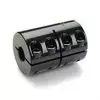
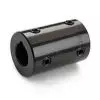
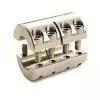
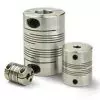
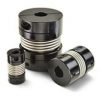

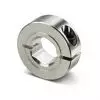
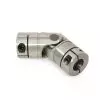
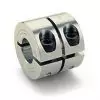 Short Rigid Couplings
Short Rigid Couplings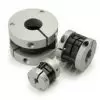 Controlflex Couplings
Controlflex Couplings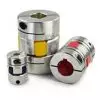 Jaw Couplings
Jaw Couplings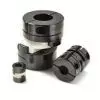 Oldham Couplings
Oldham Couplings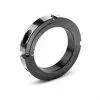 Bearing Locknuts – TCN
Bearing Locknuts – TCN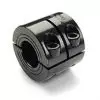 Double Wide Shaft Collars
Double Wide Shaft Collars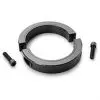 Heavy Duty Shaft Collars
Heavy Duty Shaft Collars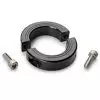 International Series Shaft Collars
International Series Shaft Collars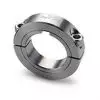 Keyed Shaft Collars
Keyed Shaft Collars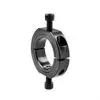 Mountable Shaft Collars
Mountable Shaft Collars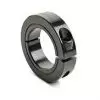 One-Piece Shaft Collars
One-Piece Shaft Collars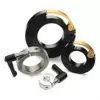 Quick Clamping Shaft Collars
Quick Clamping Shaft Collars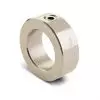 Set Screw Shaft Collars
Set Screw Shaft Collars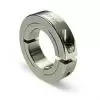 Thin Line Shaft Collars
Thin Line Shaft Collars Threaded Shaft Collars – Pacific International Bearing Products
Threaded Shaft Collars – Pacific International Bearing Products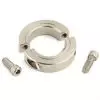 Two-Piece Shaft Collars
Two-Piece Shaft Collars Friction Bearing Universal Joints
Friction Bearing Universal Joints Needle Bearing Universal Joints
Needle Bearing Universal Joints